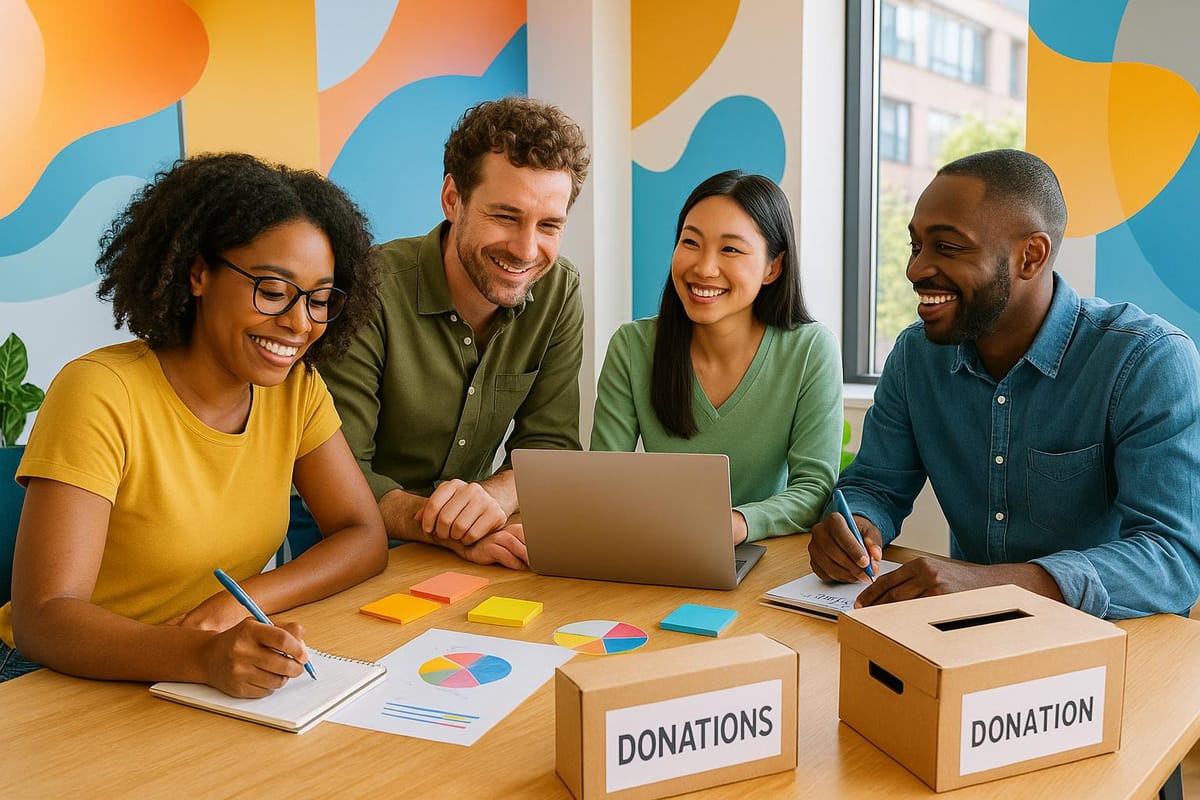Complete Guide to Giving Day Success for Nonprofits
Learn the key elements and proven strategies for running a successful Giving Day and maximizing nonprofit fundraising efforts.

Nonprofits face constant challenges, from limited resources to fierce competition for donor attention. For organizations focusing on child sponsorship programs and other causes, creating impactful fundraising strategies is critical. One of the most transformative methods to achieve this is organizing a Giving Day - a time-limited, high-energy fundraising event that can generate significant revenue while deepening donor engagement.
In a recent discussion with John Hornby, Assistant Director of Digital Marketing at the University of Delaware, and Sean Connors, Co-Founder of E Team Sponsor, the key components of running a successful Giving Day were explored. Combining their years of expertise, they shared actionable insights, strategies, and lessons learned to guide nonprofits in their Giving Day endeavors.
This article delves into the strategies shared during the conversation, providing a step-by-step guide to planning, executing, and growing a Giving Day campaign.
What Are Giving Days and Why Do They Matter?
Giving Days are focused fundraising events typically lasting 24 hours, though some extend to a few days. They aim to rally donors, mobilize communities, and achieve significant fundraising goals within a short timeframe.
For the University of Delaware, Giving Days have become a cornerstone of their fundraising strategy. Over eight years, they grew their efforts from a modest $30,000 raised in their first event to a million-dollar campaign engaging more than 200 fundraising projects. For nonprofits, Giving Days are particularly valuable for:
- Acquiring New Donors: Giving Days are often the first entry point for donors, building a pipeline for future contributions.
- Creating Urgency: Time-bound events drive immediate action.
- Strengthening Community Engagement: They unite donors, staff, and volunteers behind a shared mission.
- Amplifying Impact: Matching gifts and challenges incentivize donations and maximize outcomes.
Key Steps to Launching a Successful Giving Day
1. Start Early with Strategic Planning
- Begin planning six months in advance to ensure all components are aligned.
- Identify a core team to oversee the event, especially if your department is small. For solo efforts, consider recruiting volunteers for additional support.
- Build a clear "why" statement that articulates the purpose of the Giving Day and what success looks like.
John Hornby emphasized the importance of treating a Giving Day like a major event. "It's like preparing for a game", he said. "You need a game plan, a team, and a strategy."
2. Leverage Reliable Technology
Choose a robust platform that supports:
- Crowdfunding capabilities for individual projects.
- Real-time tracking of donations, such as leaderboards and fundraising thermometers.
- Automation Features, including personalized messaging, donor thank-yous, and data management.
A well-designed platform simplifies the process for both your team and donors, ensuring a seamless experience.
3. Develop a Communications and Marketing Plan
The success of a Giving Day hinges on effective communication. Focus on:
- Internal Buy-In: Educate staff, volunteers, and campus partners (for educational institutions) about the event's goals. Generate enthusiasm and ensure alignment.
- External Outreach: Use multi-channel marketing, including email, social media, direct mail, and text messaging, to reach your donor base.
- Segmented Messaging: Personalize outreach to donors based on their past giving history, interests, or affiliations. For example, athletic alumni may respond better to messages highlighting sports-related projects.
4. Incorporate Challenges and Matches
Challenges and matching gifts drive excitement and urgency:
- Donor Matches: Encourage major donors to offer matching funds (e.g., matching every dollar up to $5,000).
- Power Hours: Create time-bound challenges, such as rewarding projects with the most donors in a specific hour.
- Participation Thresholds: Unlock additional funds when a project reaches a certain number of donors.
Hornby highlighted how these strategies motivate donors: "Seeing the live scoreboard rise during challenges creates a sense of competition and excitement."
5. Focus on Stewardship
The donor experience doesn’t end after their gift is made. Stewardship is critical to building long-term relationships:
- Immediate Gratitude: Acknowledge gifts with a timely, personalized thank-you email or receipt.
- Post-Event Follow-Up: Share campaign results and the impact of donations. Consider a "thank-you" email blast or individual notes from project leaders.
- Personal Outreach: For major gifts, consider phone calls or personalized letters.
Hornby shared, "Your stewardship is your chance to make a great first impression. A good experience ensures donors will come back for future campaigns."
Lessons Learned from Giving Day Success Stories
Start Small and Scale Gradually
The University of Delaware’s first Giving Day had only 35 fundraising projects and raised less than $30,000. Over time, they built momentum and improved their strategy, growing to 200 projects and $1 million in donations annually.
Hornby advised, "Don’t bite off more than you can chew. Start with just a few projects and grow from there."
Create a Crisis Plan
Unexpected events can derail even the best plans. When a tragedy occurred on campus two days before a scheduled Giving Day, the University of Delaware had to pause its campaign. This experience led them to develop a crisis plan, ensuring they’re prepared for future challenges.
Engage Donors with Personalized Messaging
Generic appeals are far less effective than personal outreach. By analyzing donor data, the University of Delaware tailors its messaging to highlight causes donors care about most. This approach dramatically improves engagement and gift conversion rates.
Maximizing Participation and Donor Engagement
Peer-to-Peer Fundraising
Empower project leaders to leverage their networks. Encourage them to:
- Share campaign links via social media, text, and email.
- Engage peers, family, and alumni to participate.
Social Media Strategies
Use platforms like Facebook, Instagram, and LinkedIn to amplify your message:
- Create branded visuals and videos to share.
- Use hashtags to generate buzz.
- Encourage project leaders to post updates and thank donors publicly.
Create Urgency
- Use countdown timers and real-time donation tracking.
- Promote limited-time challenges or matches to encourage immediate action.
Key Takeaways
- Start Early: Begin planning your Giving Day at least six months in advance to ensure all logistics are in place.
- Use Reliable Technology: A robust platform with automation and donor tracking is essential for success.
- Segment Communications: Tailored outreach resonates more with donors and drives higher engagement.
- Incorporate Challenges and Matches: These strategies create excitement and incentivize giving.
- Promote Peer-to-Peer Fundraising: Empower advocates to rally their networks.
- Prioritize Stewardship: Immediate and thoughtful follow-ups ensure donors feel valued and likely to give again.
- Adapt and Grow: Start small, learn from each Giving Day, and build on your successes.
- Crisis Planning: Prepare for unexpected events to ensure flexibility during your campaign.
Conclusion
Giving Days present nonprofits with an extraordinary opportunity to raise funds, engage donors, and build long-term relationships. Whether you’re launching your first event or looking to improve an existing campaign, following these strategies can set you on a path to success. Remember, the key is to start small, focus on thoughtful communication, and continuously refine your approach.
By adopting the insights shared by John Hornby and Sean Connors, nonprofit professionals can run more impactful Giving Days, ensuring their organizations continue to make meaningful change in their communities. Now is the time to embrace this transformative approach and take your fundraising to the next level. Start planning - and start succeeding.
Source: "University Giving Day Strategies That Actually Work | eTeamSponsor x John Hornby" - eTeamSponsor, YouTube, Oct 20, 2025 - https://www.youtube.com/watch?v=4gTZGx_NQD4

